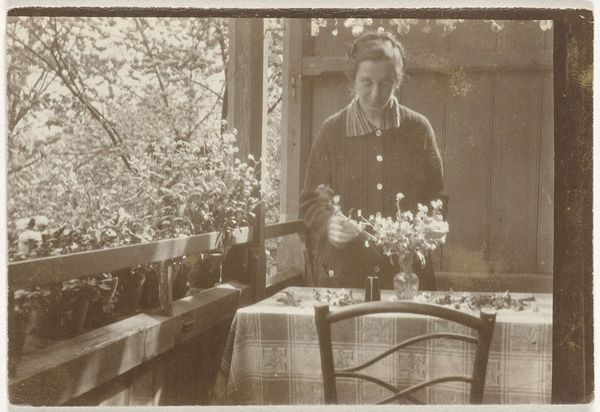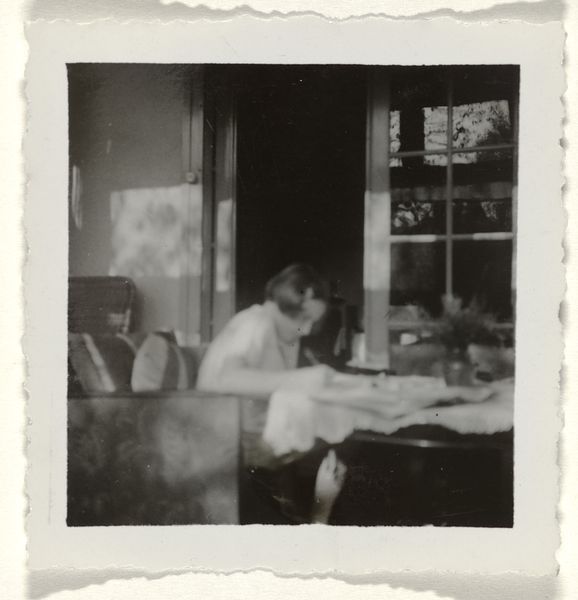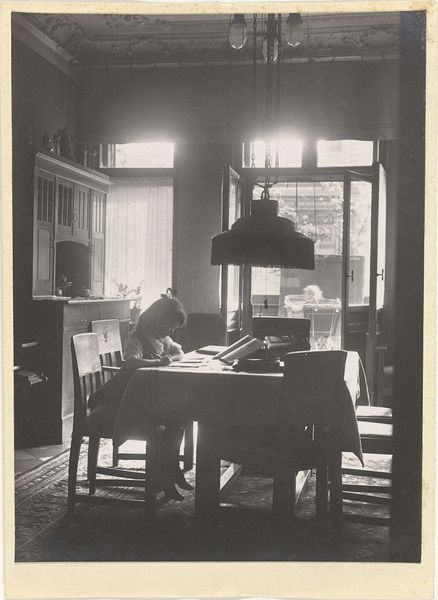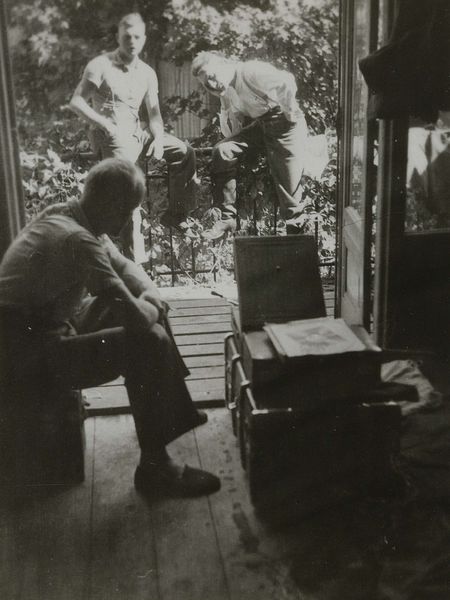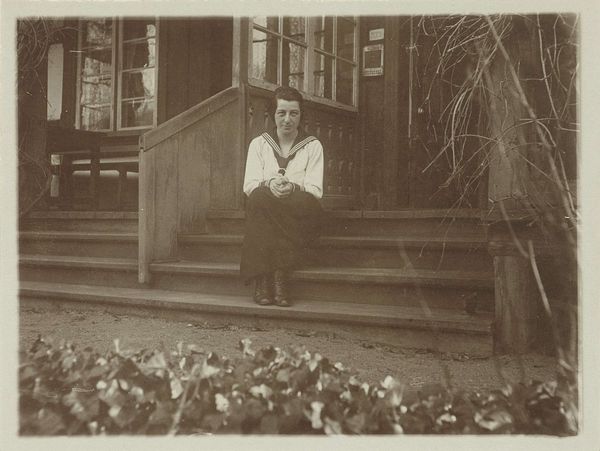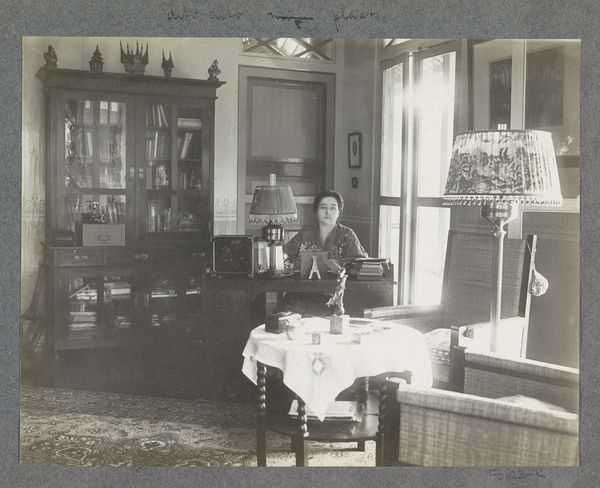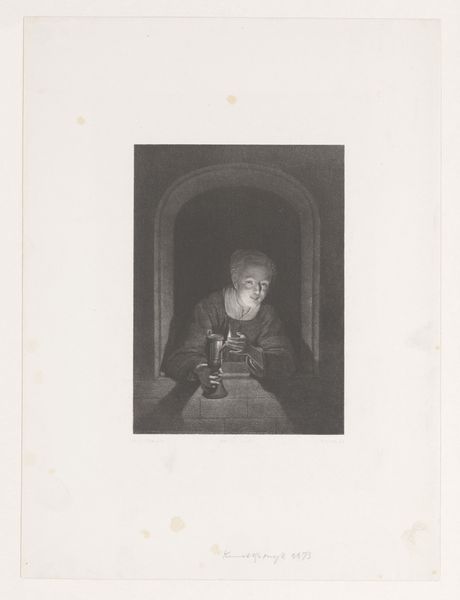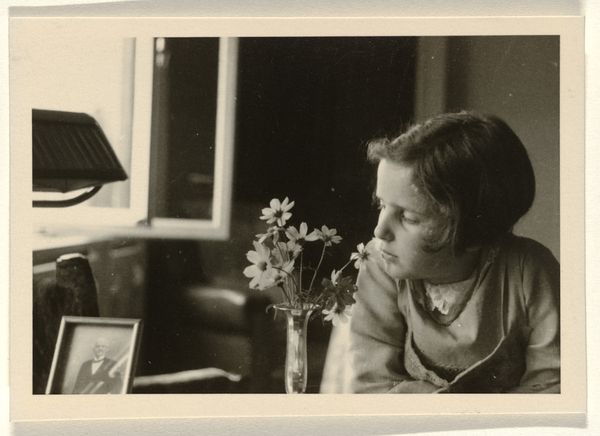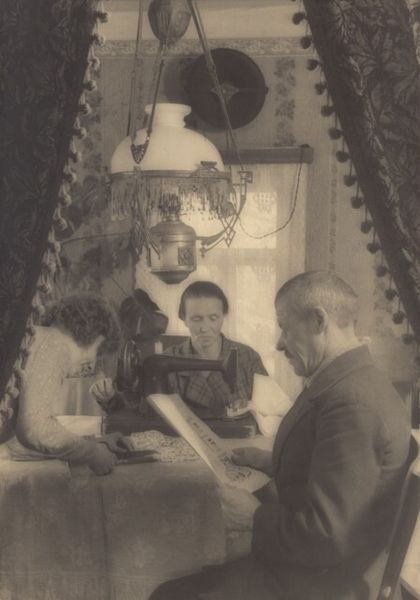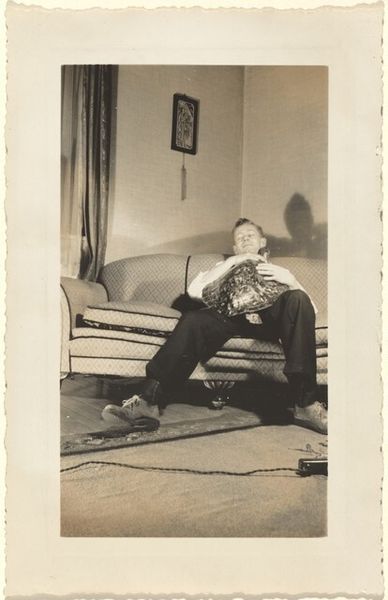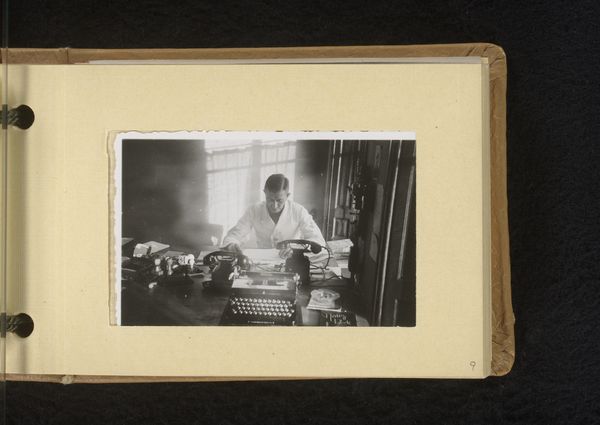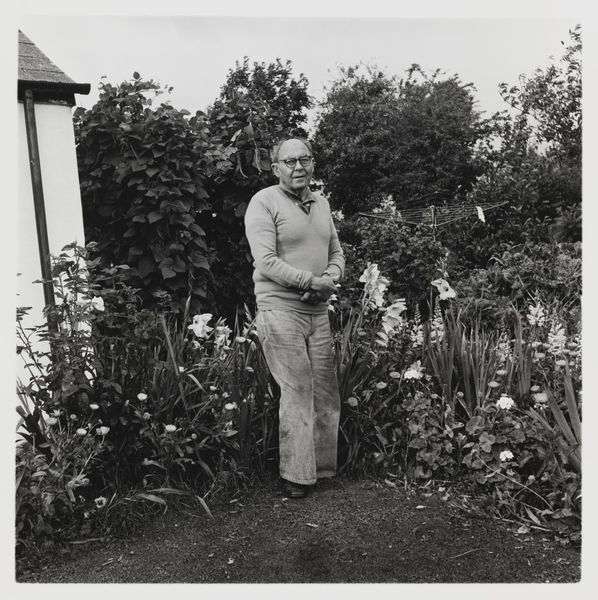
Dimensions: sheet: 27.7 x 21.1 cm (10 7/8 x 8 5/16 in.)
Copyright: National Gallery of Art: CC0 1.0
Curator: Here we have Robert Frank’s photograph, "Jack Kerouac," dating from 1959. It’s a black and white image. Editor: It strikes me as intimate. There's Kerouac, caught in a domestic interior, apparently mid-sentence. He is surrounded by plants and seems entirely absorbed. Curator: The means of production are interesting here. Look at the material contrast between Kerouac’s rough, checked shirt and the more bourgeois wallpaper that seems to partially obscure Kerouac typing at his typewriter, hinting at both the accessibility and labor of artistic creation, but its embeddedness within a consumer context. Editor: Absolutely. The plants act like symbolic curtains, framing the writer in a theatrical yet natural tableau. They also symbolize growth, inspiration perhaps? Or the organic process of creativity itself, struggling within and against a stifling context? Kerouac seems framed, in layers. It brings out both his humanity and struggle. Curator: Exactly, think of the process of creation and its connection to place, labor, and value. This wasn't a staged set. This was someone’s home, with domestic labor visible. The labor of making a home alongside the work of creating. A place in the world being built at the same time that worlds within stories are made by typing at the machine in front of him. We see, even the typewriter has materiality and speaks to what technologies of writing are capable of making. Editor: And those floral patterns behind him, and surrounding, recall earlier traditions. You know, Victorian ideals about domesticity and nature brought into the home to remind its occupants about life cycles and connections beyond the industrial and everyday, suggesting that writers must keep connected to these archetypes, to make sure their writing comes alive. Curator: It speaks to the complexities and the lived realities inherent to all art-making. Nothing springs forth fully formed without an entire architecture of material conditions and history. It feels quite raw and documentary in that regard. It gives food for thought on the daily efforts that underlie creativity and cultural movements. Editor: A lasting image, indeed. Curator: Absolutely, a fascinating nexus of culture, class, and production.
Comments
No comments
Be the first to comment and join the conversation on the ultimate creative platform.
